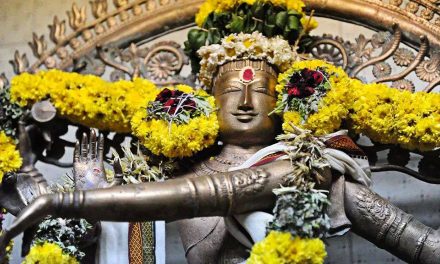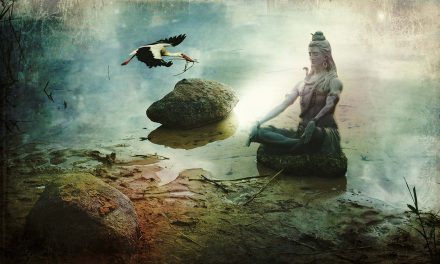Unlike the Ganesh Cult, the Kartikeya cult was confined to South India only. In the Vedic calendar, the sixth day of a lunar month (Sasthi) is considered sacred to Kartikeya. Tradition has it that he married Valli, a forest maid, and Devasena, the daughter of Indra. According to the Puranas, he was born as the son of Lord Siva and Devi Parvati to kill the demon Tarakasura. He is also famously known by different names, such as: Sanmatura, Sadanana or Sanmukha, Devasenapati, Saktidhara, Tarakari, Kumara, Skanda, Subrahmanya, etc.
According to Sastra, Kartikeya’s mount is a peacock. In an age where wars were frequent, whether to subdue an enemy or to conquer new lands, the emergence of a God of war was inevitable. The God full of youth and vigour, outshining the luminosity of the sun, was Kartikeya, the son of Siva.
It is difficult to trace the origin and birth of Kartikeya, but in this paper an attempt has been made only to highlight the importance of Kartikeya images preserved in the Orissa State Museum. According to the story, Kartikeya’s birth took place under unusual circumstances. Indra was sitting deep in thought on the mountain, pondering on the problem of who should be the commander of his armed forces.
He suddenly heard the crying of a beautiful young girl on the verge of being kidnapped by a demon. Indra rescued the girl and she said that if she had a husband to protect her, she shall be free from the dangerous demons. The girl wanted a husband who was invincible, famous and a devotee of Brahma — one who could conquer the daityas and the devatas. For her, Kartikeya was produced. He grew up very fast and had 6 heads, 12 eyes, 12 ears, and 12 arms.
The Pleiades, or the seven chaste women, were the wives of the seven divine sages. Six of them were raised to the sky and became the Kritikas or the Pleiades. The seventh one was also chaste as well as pious and devoted to her husband. She was separately raised to the sky and became the Arundhati.
P.K. Agrawala writes that Agni is credited in the Rigveda with having many mothers. If they are seven in number, as his sisters are seven, and as can be guessed on the basis of the tradition in the Yajurveda, recording seven wombs for producing Agni, similarly it is with Kartikeya’s seven mothers
The six heads of Kartikeya also represent six attributes of the Deity. They are: Jnana (wisdom), Vairagya (detachment), Bala (strength), Kirtti (fame), Shree (wealth) and Aiswarya (Divine power).
Scholars have divided the images of Kartikeya into two types: with and without peacock, his characteristic attribute. Various texts regarding the iconography of Kartikeya have been studied by famous scholar, T.A. Gopinath Rao. He describes the iconography features of Kartikeya in his monograph titled Elements of Hindu Iconography. As regards to hands, images of Kartikeya are found wherein he possesses two, four, and more than four hands. Among these, the two-handed images are considered as satvika, four-handed images are considered as rajasika, and those having more than four hands are regarded as tamasika in nature.
According to the Agamas, the attributes of Karttikeya consist of the Sakti, Khadga, Akshamala, Abhaya, Kukkuta and the Khetaka, etc. Interestingly, the Agamas mention that the images of Subrahmanya or Kartikeya should be set up in a village or in a palace. On the western portion of Parsurameswar temple at Bhubaneswar we find Kartikeya with his hair flying in the wind, shown sitting on his peacock mount. The angle at which the peacock has been carved gives the impression that it is a boat and the spear in the hands of Kartikeya looks as if he is steering a boat. Actually the spear is aimed at asura figures depicted below the panel.
Another Kartikeya image is found in the east side of Parsuramesvara temple, belonging to the 9th century A.D. Kartikeya on the east side is in meditation pose, shown sitting on a throne and holding a spear in his left hand and a fruit in his right. The peacock has been carved sideways below the throne. Erotic carvings are depicted in the niches on either side of the main deity.
In Muktesvara temple we find Kartikeya sitting on a Padmasana while his peacock stands on his right side and a cock (rooster) on his left side, both looking up at him. The deity carries a spear in his left hand and the right hand is in varada pose.
Kartikeya has a very composite character, comprising diverse aspects. On one hand he is depicted as the God of wisdom as well as the God of war. But from the time when Ganesha acquired supremacy over Kartikeya, the former has been considered as the God of wisdom.
During the Kushana period, i.e., the early part of the Christian era, the popularity of Kartikeya grew substantially. This may have been because the Kushanas were basically a martial race, so for them a God of war as a patron deity would obviously have been the right choice. This belief is corroborated by the discovery of a large number of images of Kartikeya from Mathura and the great cities of North India during the early part of the 1st century B.C. This is further corroborated by the discovery of a large number of coins of this period belonging to the Kushana King Huviska, bearing the image of the God of war, Karttikeya.
Temples dedicated to Kartikeya are first mentioned in Kautilya’s Arthasastra, composed before the beginning of the Christian era. The discovery of a large number of Gupta seals shows how popular the cult of Kartikeya was at that time. Some rulers of the Gupta dynasty were at that time even named after him, such as Kumara Gupta, I, his successor Skanda Gupta, and Kumara Gupta II. The Guptas were devotees of Vishnu, but generally other Gods of the Hindu pantheon were also revered by them. Kumara Gupta I was the first Gupta emperor to hold Kartikeya as the main deity, and he issued the peacock type of Kartikeya coins in gold. Discoveries of Gupta images of Kartikeya have been made from many places in North India such as Varanasi, Kanauj in Uttar Pradesh, and Orissa also.
After the Gupta age, the popularity of Kartikeya as a God declined in North India and he is mentioned more in association with Siva rather than by himself. R.G. Bhandarkar has observed that in the later Medieval period it was seldom that separate shrines were dedicated to him, he having become a part of Siva’s family. His image has since been always enshrined in temples dedicated to Siva.
Kartikeya’s role as commander-in-chief of the celestial armies is emphasized more than his qualities as a God of wisdom and learning. Professor Banarjee observes that Kartikeya was worshipped especially in North India from early times. But since his worshippers did not get a separate status, it is presumed that they did not form a separate sect, like devotees of the five Puranic deities, viz, Vishnu, Siva, Sakti, Surya and Ganapati. So Kartikeya was worshipped under different names or aspects, such as Skanda, Kumara and Subrahmanya in the South.
The State Museum has collected a series of Kartikeya images from various places of the State. Among them, the six-headed Kartikeya is a rare specimen. The six-headed image of Kartikeya was brought from the hill fort of Junagarh by the Superintendent of Orissa State Museum, Dr. C.B. Patel. The peacock as an essential element in the iconography of Kartikeya prominently appears in the back of the image. It was made of red sandstone during the Kalachuri period. It measures 19″ x 13″ x 5″. The upper right hand holds a trident and the palm of the peacock. The lower left hand holds an indistinct object. The upper right hand is partially damaged. The figure is ornamented with heavy anklets on the half-damaged foot. A big rudrakshyamala (garland) is encircled round the neck of the deity, touching the belly of the image.













very interesting…OM SARAVANA BHAVA NAMA……
“Kaumaram” is the name of the separate sect for Lord Muruga or Lord Karthikeya and part of shanmatham ( 6 sects). There are around famous 64 temples in Tamilnadu. Worshipped in Ceylon, Malaysia, South Africa, Singapore Mauritius, Maldives etc…..
Vetri vel muruganukku Hara haro hara
I would like to ask a pertinent question.
I read on a you tube site that women should avoid praying lord Kartikeya, can someone tell me why is its true cause i’m so confused after reading this article.
Thank you .